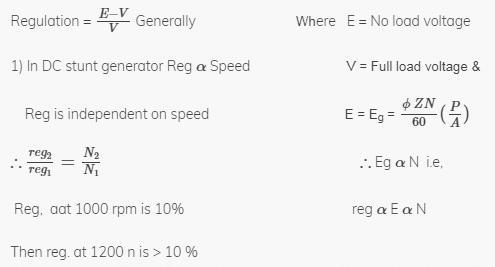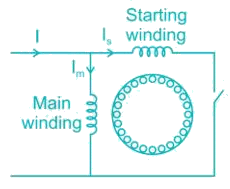Test: Electrical Machines- 1 - Electrical Engineering (EE) MCQ
20 Questions MCQ Test - Test: Electrical Machines- 1
In a DC machine, which of the following statement is true?
A dc shunt generator has full-load voltage regulation of 10% at rated speed of 1000 rpm. If it is now driven at 1250 rpm, then its voltage regulation at full load would
| 1 Crore+ students have signed up on EduRev. Have you? Download the App |
The voltage applied to a transformer primary is increased by keeping v/f ratio constant, with this the core loss will
In a synchronous generator operating at zero power factor lagging. The effect of armature reaction is
Skewing of the rotor in a three-phase squirrel-cage induction motor reduces
A series motor drawing an armature current of Ia is operating under saturated magnetic conditions. The torque developed in the motor is proportional to
A transformer having 1200 primary turns is connected to a 240 V a.c. supply for a secondary voltage of 360 V, the number of turns on the secondary should be
The maximum efficiency of a 100 kVA transformer having iron loss of 900 W and full load Cu loss of 1600 W occurs at________kVA.
Torques developed by a split phase motor is proportional to
A fluctuating voltage supply is detrimental to a refrigerator motor, but not a ceiling fan motor, although both are single-phase induction motors because, the refrigerator motor
Consider the following steps
1) Reversing connections to the terminals of the capacitor
2) Changing the position of the capacitor from auxiliary winding circuit to main winding circuit
3) Reversing supply connection to the main winding
4) Reversing supply connection to the auxiliary circuit
While installing a new ceiling fan, if the fan motor is found to be rotating in the wrong directions then the direction of rotation of fan motor can be corrected by
For a given output and speed, a universal motor as compared to 220 V, 50 Hz supply will require
For domestic sewing machine, the size of motor required is
In an induction motor, if the rotor resistance is equal to standstill reactance then the maximum torque is
The machine which is designed to run without an active load but with its excitation to produce reactive power is called
Reluctance torque in rotating machines is present when_______
The squirrel cage winding of a single phase motor is placed in the

























